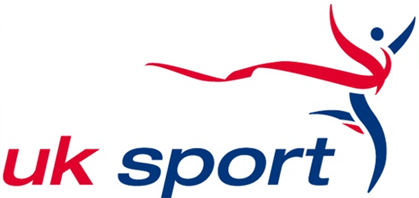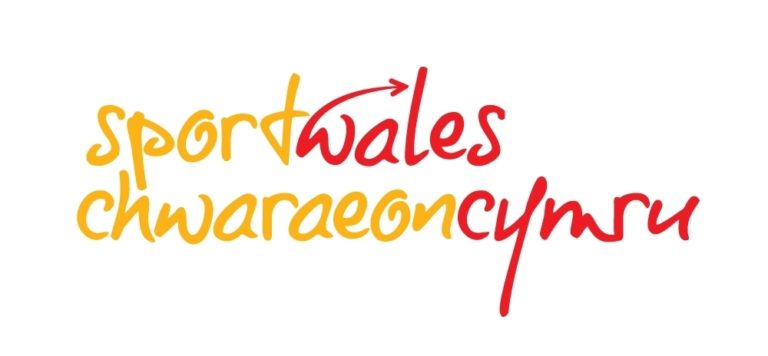Get Started With Parkour – A Guide To Shoes
Unlike most other sports, parkour does not require a load of equipment to get started.
All you need is some joggers and a pair of parkour shoes and you’re good to go.
When it comes to shoes, however, some of the top Google search results are for “The Best Parkour Shoes.”
To help you #GiveParkourAGo, we have compiled a list of what to consider when choosing your parkour shoes and a list of what the community is wearing right now.
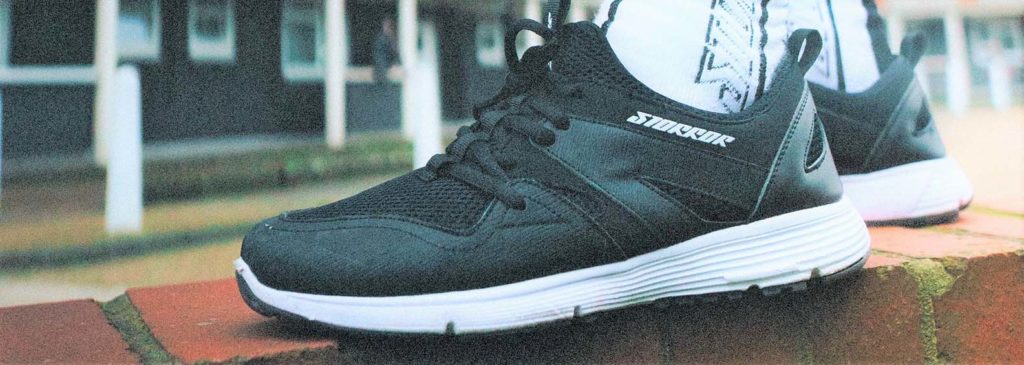
**DISCLAIMER – WE ARE NOT SPONSORED, PAID BY, OR RECEIVE ANY GAIN FROM THE BRANDS OR BUSINESSES LISTED IN THIS ARTICLE. THE INFORMATION HERE IS COMPILED FROM THE PERSONAL EXPERIENCE OF THE AUTHOR, AND FROM THE INPUT OF PARTICIPANTS WITHIN THE PARKOUR COMMUNITY**
Before we start, there are loads of videos online that explain this in great detail. We have listed one from Kie Willis of Storm Freerun below. You can give that a watch before you read the rest of the article.
There are 3 factors to consider when choosing a shoe for parkour & freerunning. These factors are grip, cushioning & durability.
Grip
The grip on your shoes is without a doubt one of the most crucial things when considering what shoes to wear for parkour (For beginners, it is also one of the most neglected!).
Without the grip, when you’re jumping to walls and rails or trying to climb up a wall, there will be little to no friction. With that in mind, we recommend opting for shoes with a flat rubber sole, instead of foam.
Flat rubber soles help you maximize the amount of friction between yourself and the surface you’re jumping to.
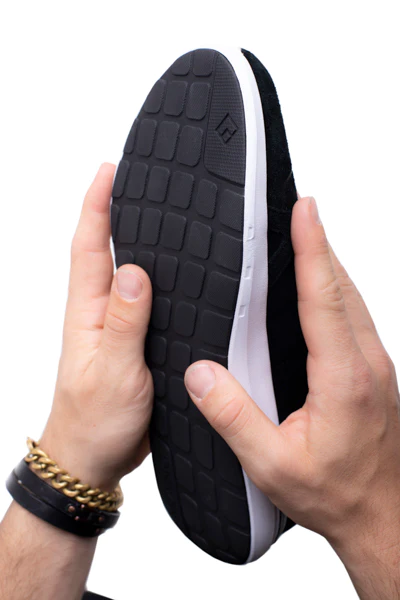
Any kind of rubber sole is great for grip. However, we recommend going for a flat, single piece of rubber on the sole of the shoe. This is incredibly important on the ball of the foot and toe section of the shoe.
Having rubber that is sectioned on the bottom of the shoe runs the risk of snagging and tearing on surfaces quite easily. As mentioned in Kie’s video, sectioned soles aren’t all bad. If you find a shoe with a sectioned sole, try your best to go for vertical sectioned cuts, rather than horizontal.
The photo to the right is taken from the ‘Farang – Elevate’ parkour shoe, which boasts a flat, single sole piece of rubber on the bottom.
Cushioning
With cushioning, your personal preference really comes into consideration here.
Within the last few years, loads of participants in the sport have opted for skate shoes, popular for their ‘zero-drop’ aspect.
The term zero-drop means little to no cushioning at all. Popular shoes within the sport include the Nike Alleyoop’s or the Adidas 3MC.
If you’re new to the sport, then perhaps to start with, you would like to opt for cushioning that is more supportive of the arch and the heel. This can also be the case for those who may be training with lots of heavy impacts.
Adidas offers a wide range of thicker shoes, which can be found on their website or in your local high street sports store.
However, you may want to work on your technique, and touch and really want to feel your landings when training. That is really where the zero-drop aspect comes in. It goes without saying that when you train with less cushioning, you are going to feel the landings a little bit more, which in turn, will allow you to work on your technique, touch, and landings.
We’ve attached three photos below demonstrating what a high-cushioned, mid-cushioned, and zero-drop shoe looks like. Each is worn by the parkour community.
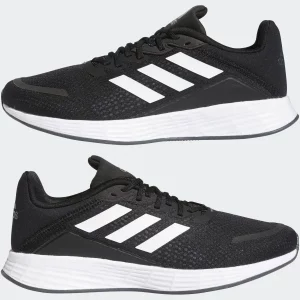
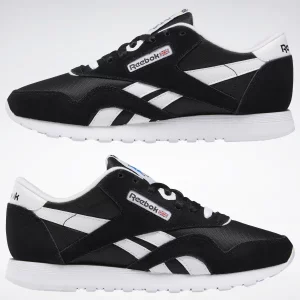
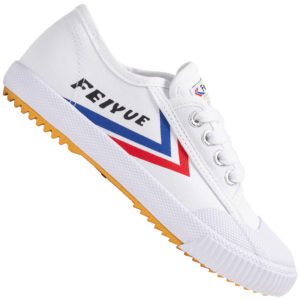
Durability
Finally, we have durability. There are some key things to look for when it comes to the durability of the shoe. You want to look for a shoe that is incredibly durable but doesn’t weigh too much.
We recommend looking for a mesh upper. The mesh upper allows the foot to breathe whilst training. Make sure to also check that the toe area is reinforced. Mesh without the toe cap will result in the mesh tearing easily. For a good example of this, check out this image of this Adidas shoe.
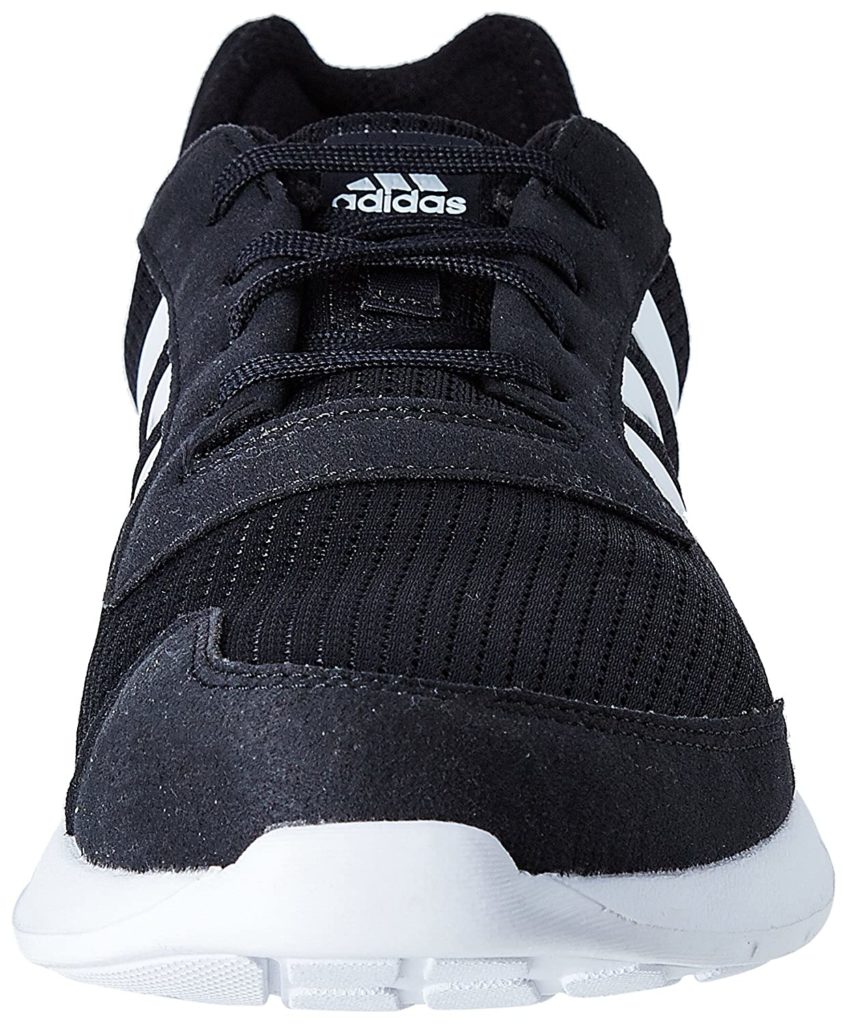
If you look on the left-hand side, you notice there is a little bit more protection in the area of the big toe. This is to add durability to help reinforce the mesh.
This allows the shoe to be incredibly lightweight, but also durable. It is the perfect combination of both.
With durability, you get what you pay for. It may be worth investing a little bit more money into your parkour footwear just for longevity purposes.
What does the community recommend?
On our Instagram, we asked the parkour community what shoes they are wearing right now. We’ve attached some of the most common answers below!
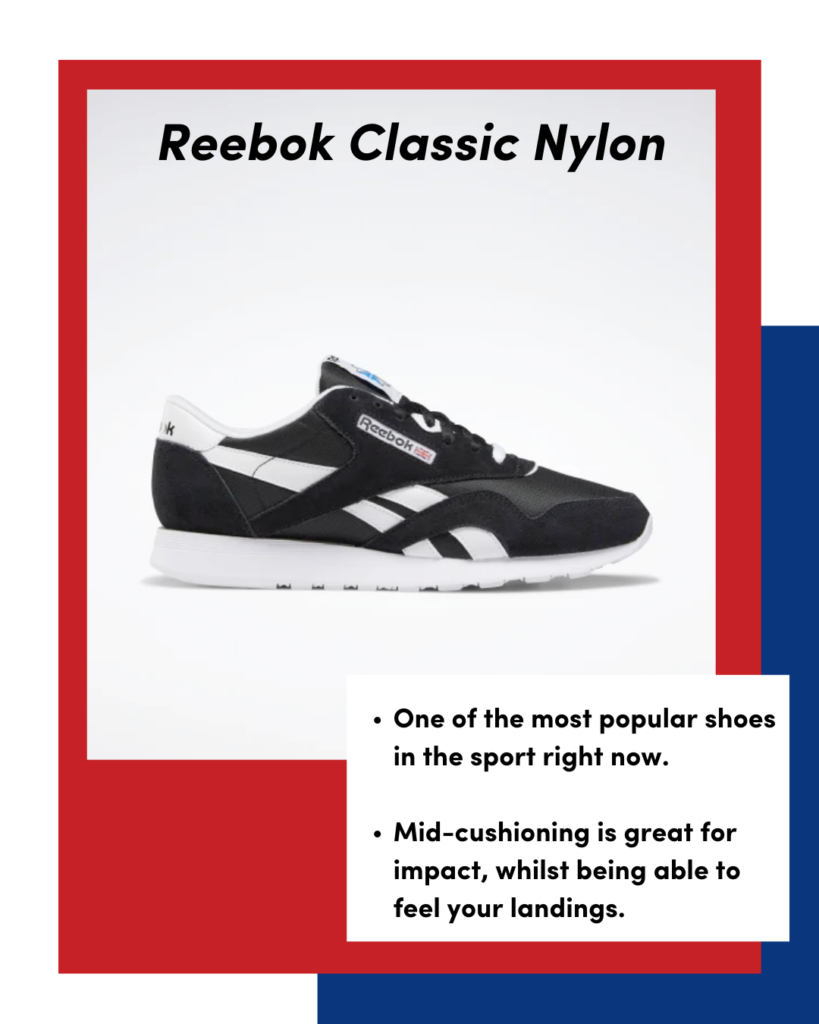
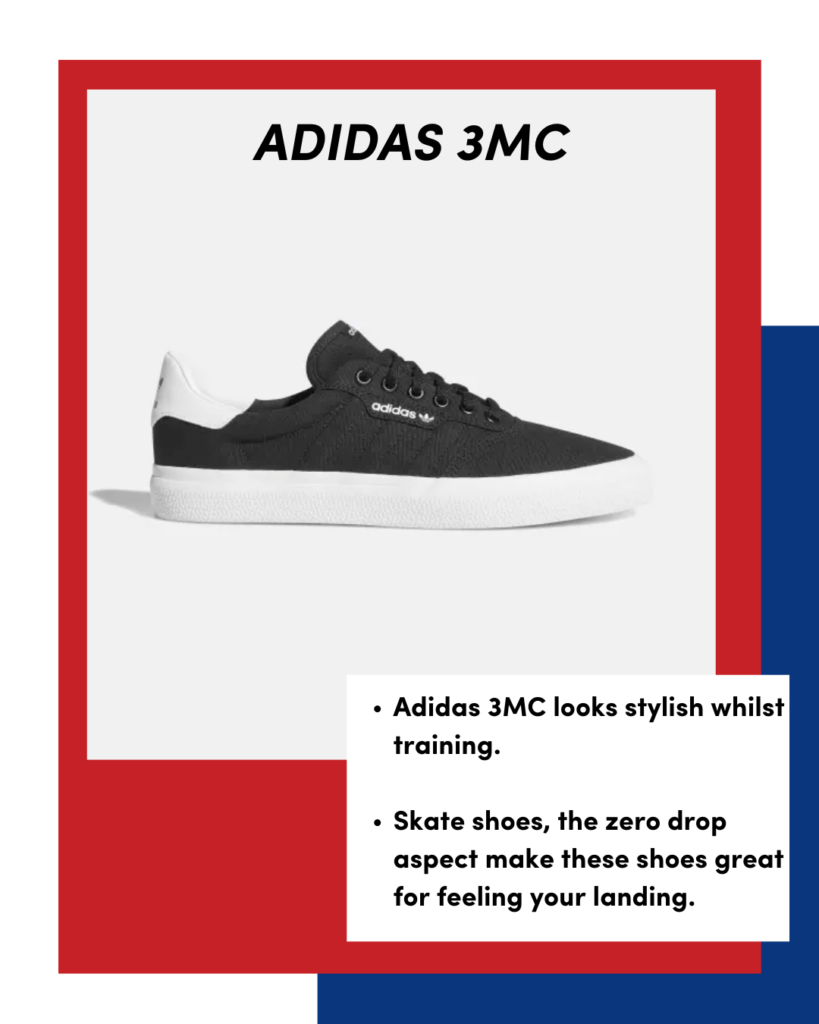
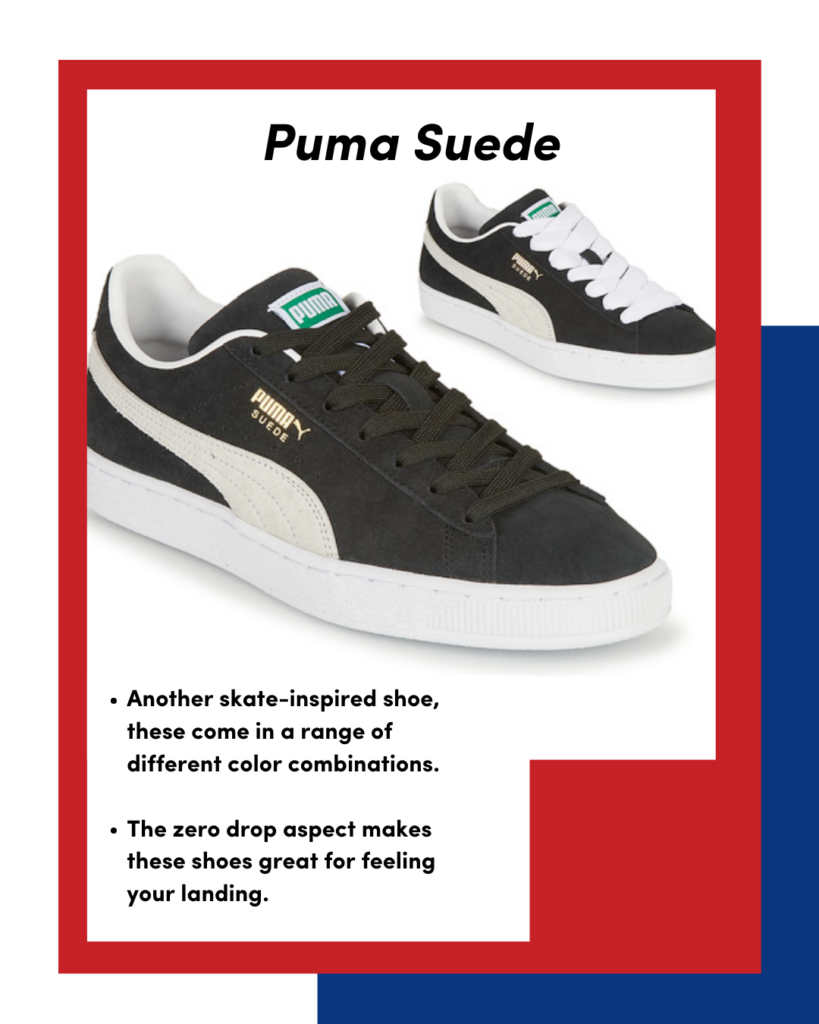
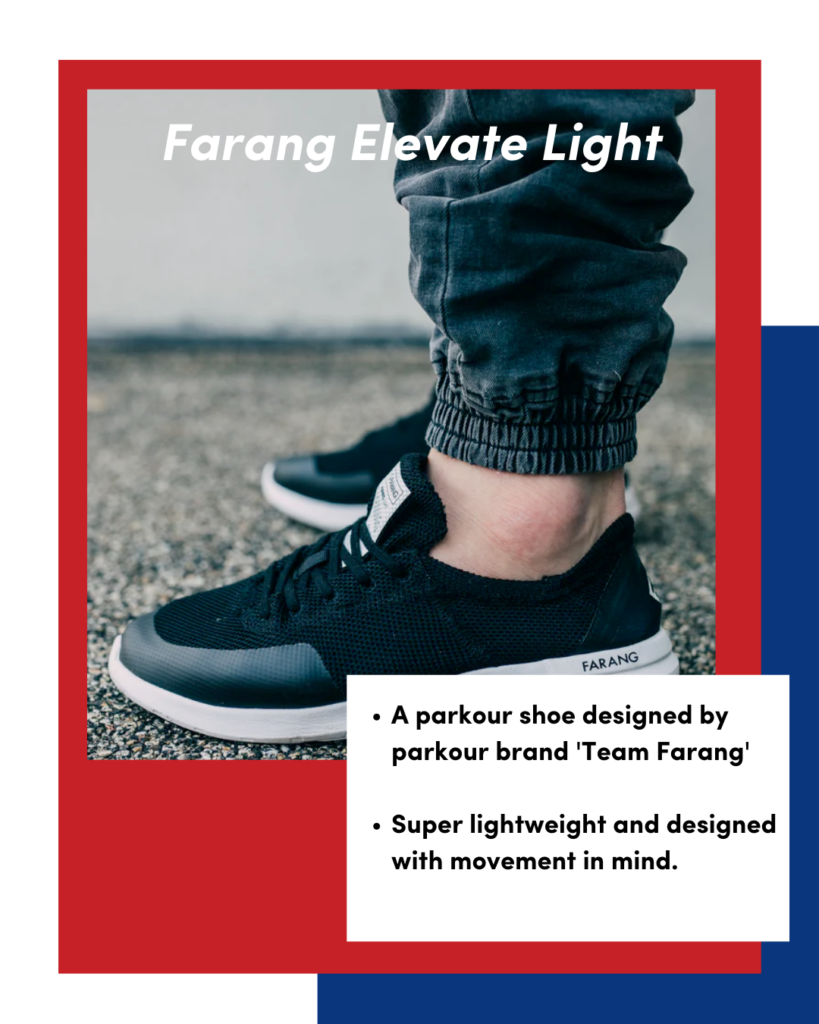
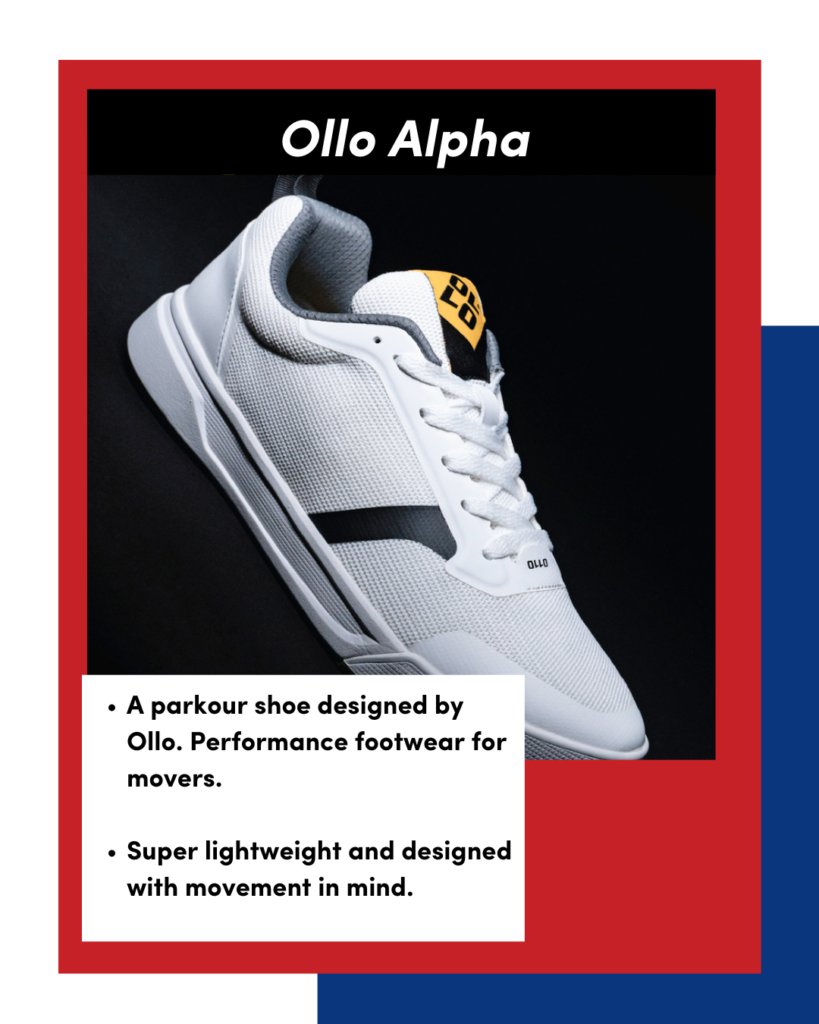
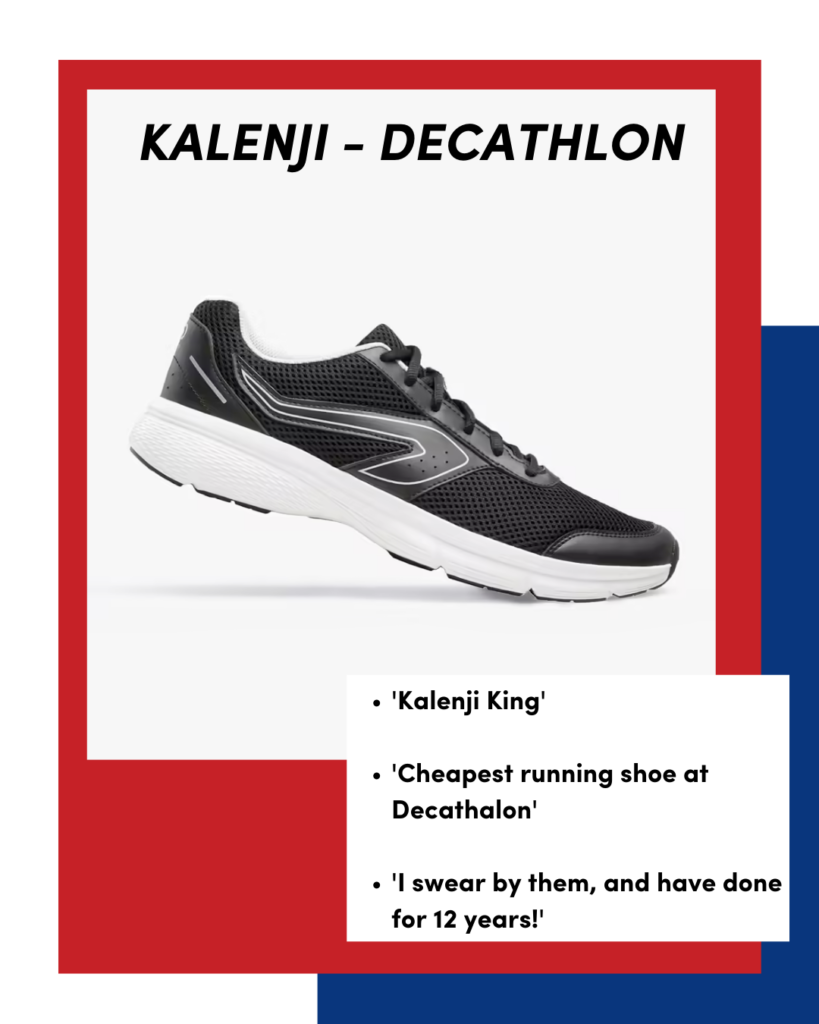
Supporting Parkour Culture
With parkour being a sport that is still in its infancy, we really try to promote and support parkour culture wherever we can.
We’ve listed below some parkour companies that have created parkour-specific trainers. These are designed by practitioners, for practitioners. These options are a little more costly than some of the big brands such as Nike or Adidas, but by purchasing from a parkour brand, you are helping support the parkour industry.
Team Farang – The Farang Elevate and Elevate Light Parkour Shoe
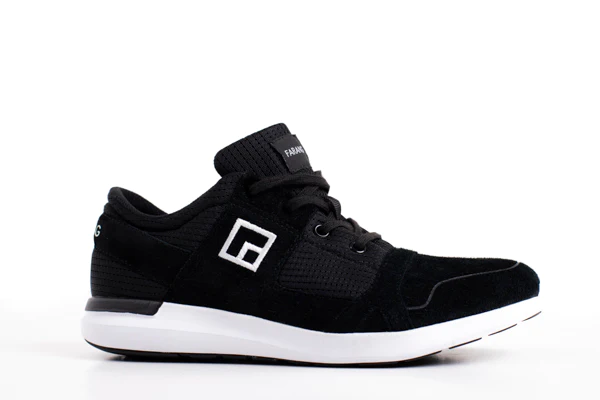
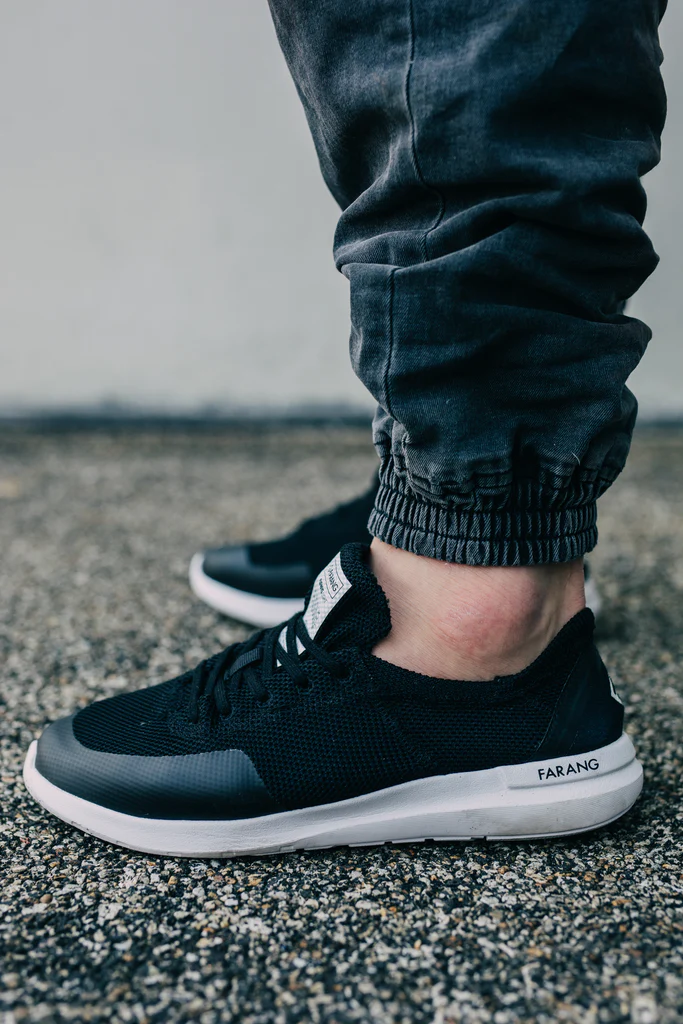
Storror – The Storror Tens (Another shoe is also in the works)

The Strike Movement Haze (WaveZilla Edition)
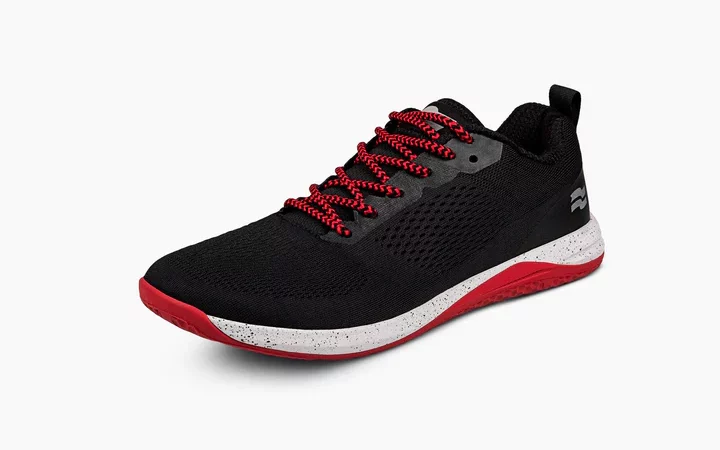
The Ollo Alpha Shoes
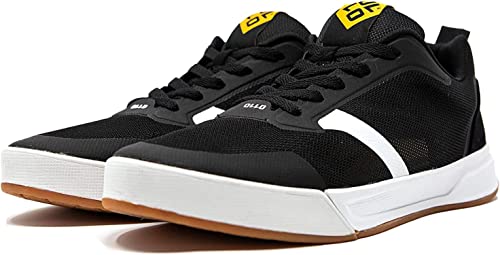
Summary
When it comes to parkour shoes, there really are no right or wrong shoes. Through my decade of experience in parkour, I have tried and tested many different pairs of shoes, some may not have worked for me, but other people have found them perfect.
Test out some shoes over time, and see which ones work best for you. And if you find any hidden gems, make sure you let us know!



